Laphroaig encourages responsible drinking. Alcohol should be consumed in moderation. By entering this website, you are agreeing to our Terms and Conditions, Privacy Policy and Use of Cookies.
Must be legal drinking age to enter this site.
Our Process
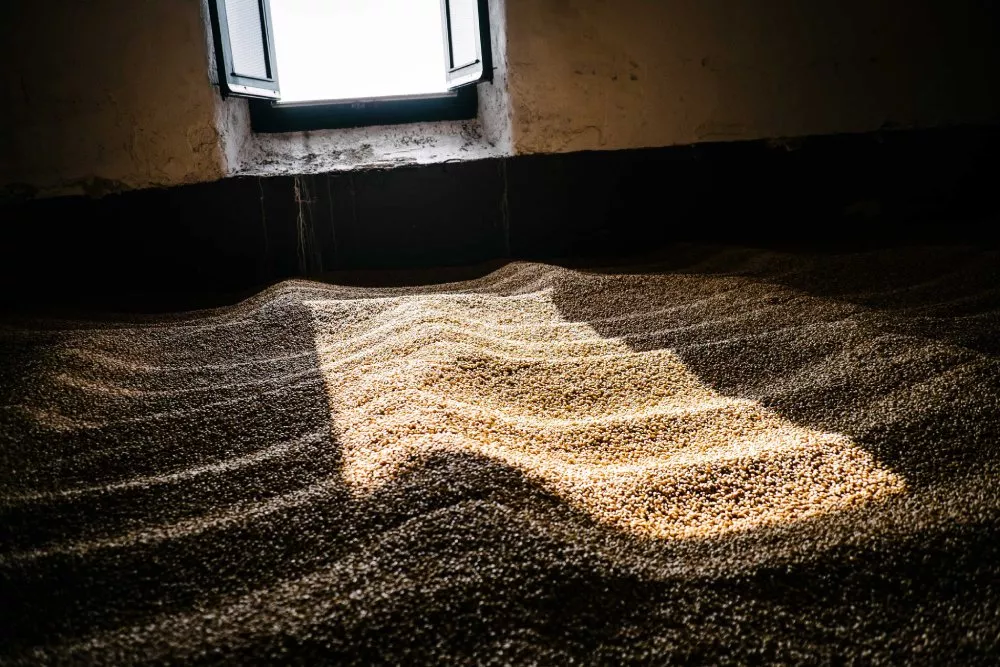
We’re rather blessed here on Islay. The Kilbride Stream means we’ve got a plentiful supply of peaty, mineral-rich water. We use it as a coolant throughout the whisky-making process and it’s one of Laphroaig’s main ingredients, lending soft, peaty, flavoursome notes to our whisky. As for our soil, well, our peat bogs are unlike anything found on mainland Scotland. There are no forests on Islay, so the plants that fuel the peat are primarily heather, lichen, and moss. These give Laphroaig its herbal, qualities that are distinctive to the island, and our whisky. Also in the mix is old sea vegetation from when Islay was under water. The influence of this on our peat gives Laphroaig its maritime character and is one of the biggest ways in which ours differs from mainland peat. So, from earth and water to our fine whisky. How? Let’s find out…
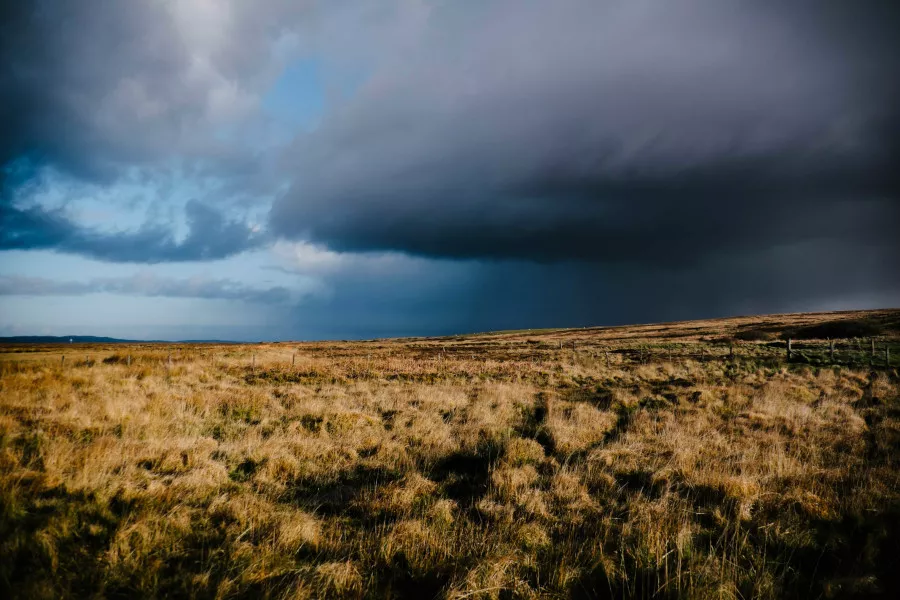


It all begins with barley. At the top of the malting house are our steeps, where the barley is soaked for two days in water from the Kilbride Stream. It’s then drained, and the now green malt is moved to the malting floor. Holding up to seven tonnes of barley, our malting floors are where we fool the barley into germinating. (Sorry barley, but needs must.) The barley is spread across large floors and turned on a daily basis. The space and the rotation are so important because it affects how much starch turns to sugar. It’s a 7-days-a-week job and a labour of love for our Maltmen. At the same time, we help regulate the temperature by periodically opening the windows to borrow the power of the cool Atlantic air. This ocean breeze brings salt in its moisture which helps add those welcome salty notes to the final product.
Our Peat Kilns
Built in 1840, Laphroaig’s peat kilns look out over the bay. It’s here we burn the peat to impart the barley with our signature smoky flavour. Unlike most distilleries, we infuse the barley with peat smoke before we dry it. For around 10-12 hours, the smoke (or ‘peat reek’) rises through a perforated drying floor into the kiln. The vapourised oils – the peat’s phenolic compounds and other wood-based smoky flavours – are then absorbed by the damp barley. We burn our peat at a relatively low temperature for a “cold-smoking” process responsible for the tarry note found in Laphroaig. Once the grain is malted, we spread it on mesh and raise it 16 feet over the peat fire. At this distance the grain takes longer to dry out, and the longer the barley stays moist, the more flavour it absorbs. The barley’s fully dried out and then it’s on to the mash house.
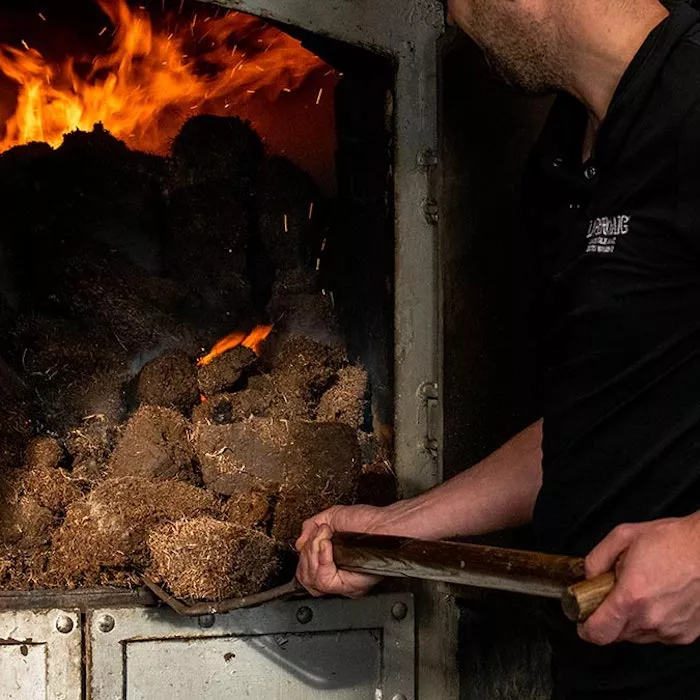
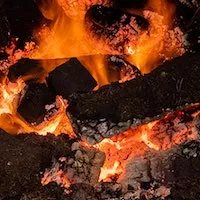

Releasing sugar, making alcohol. Because it’s malted, we don’t need to cook our barley to get sugar. Instead, we mill it to a grist of husk and flour, and it goes into our stainless-steel mash tun with water from the Kilbride reservoir. To get the maximum extract, we start the mash tun at 63.5°C. The grist floats and we’ll start to drain off the liquid through the plates below. After we’ve extracted around 10,500 litres of sugary water or ‘wort’ from the mash tun, we introduce it to the magic ingredient – clever old yeast. Over the next two or so days, the yeast converts the sugar into alcohol, developing lots of the flavour compounds responsible for Laphroaig’s fruity notes. At this point, we have the beginnings of our whisky. But try a dram of this stuff and it’s like liquid smoke – very peaty, very sweet. On to the stills…
Distillation
We’ve got seven copper stills for double distillation. The first distillation takes place in one of the three larger wash stills, the second in one of the four smaller spirit stills. The first distillation produces a spirit or ‘low wines’ with an alcohol content of 35%. Our lyne arm – which links the still to the condenser unit – reaches right up to the ceiling. This height combined with our slow distillation rate removes heavy oils and overwhelming flavours. It helps keep Laphroaig light-bodied and only four or five other distilleries do it this way. The second distillation is when we make the cuts. As with other distilleries, we only keep the middle part or ‘cut’. The first cut is after 45 minutes – the latest in the industry – and the second at 60 minutes. This makes the spirit less sweet while preserving its more tarry, herbal, peaty notes.
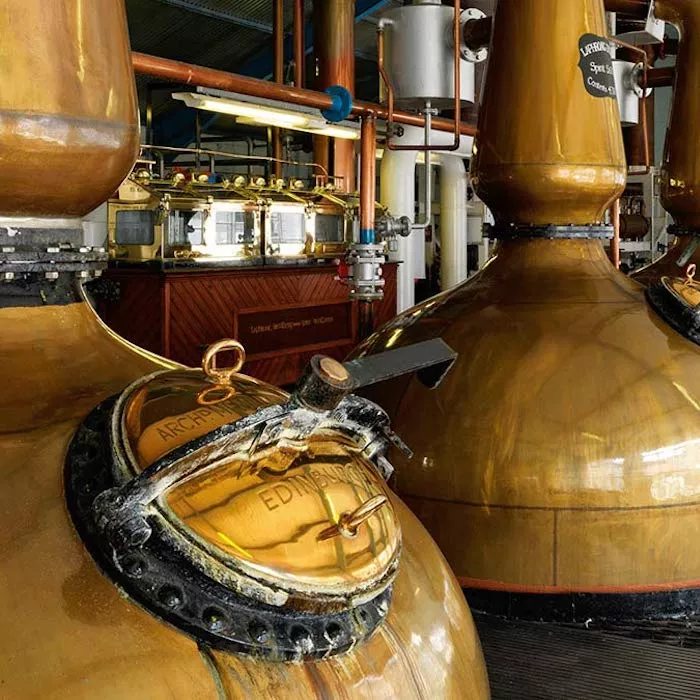
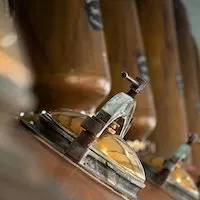
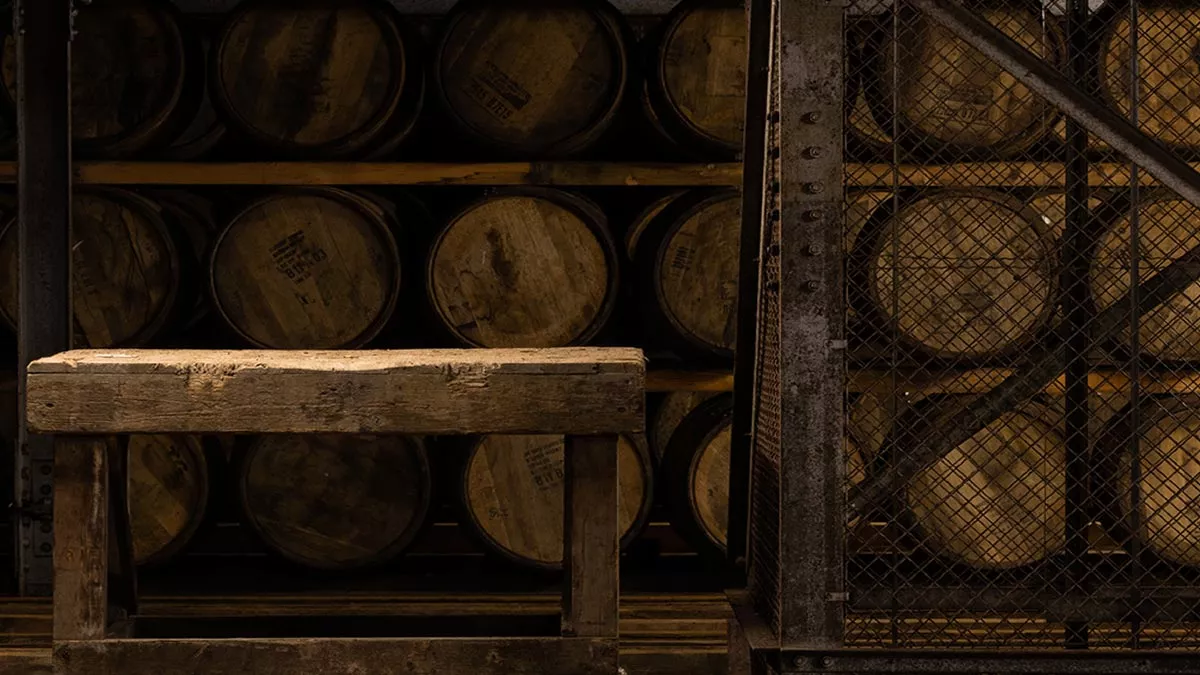
The whisky gets diluted to 63.5% proof point then pumped into an oak cask and left in one of our warehouses to mature. Situated on the coast, our barrel rooms are heavily influenced by the sea air. That’s why you can taste the salty might of the Atlantic in our whisky. When left to mature, the spirit expands in the summer months and pushes into the wood. In winter, it makes the reverse journey, bringing the wood’s colour, flavour and sugar with it. At the same time, sulphides, water, and alcohol evaporate from the barrel. Nearly all our whisky is at least partially matured in ex-Bourbon casks sourced from Maker’s Mark in Kentucky. The American white oak gives it a caramel sweetness, and notes of vanilla, fruit, spices, even tobacco and leather. Once mature, the whisky is mixed with other casks then bottled, labelled, and sent off to be enjoyed by a Laphroaig lover like you.


